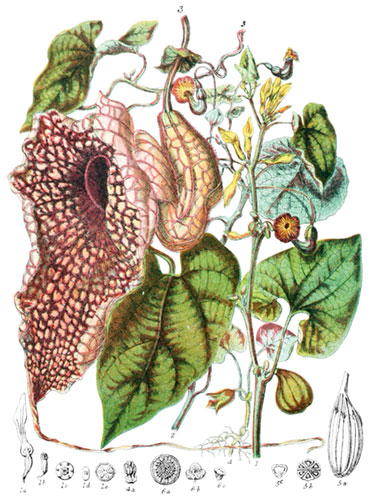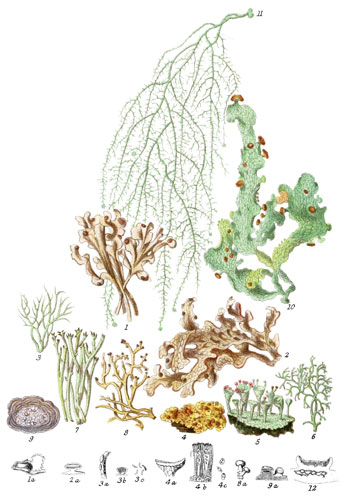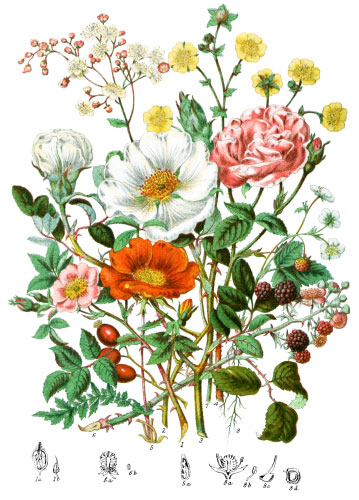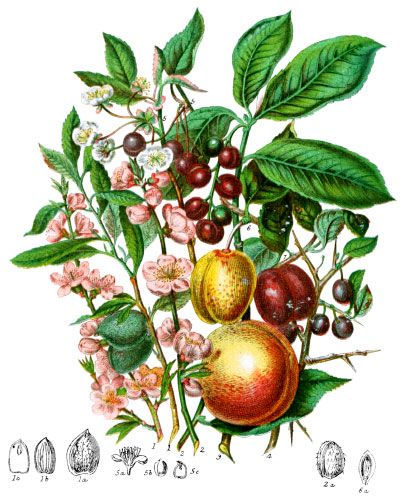Key characteristics
Trees, with a watery or resinous juice. Leaves alternate, pinnate, generally without dots, and have no stipules. Flowers herbaceous, inconspicuious, and imperfect; those having stamens only grow in catkins from the branches of the preceding year; the fruit-bearing flowers grow at the ends of the young branches either in small clusters, or in long racemes; in some cases the two kinds of flowers are mingled in one panicle. The calyx of the staminiferous flowers has two, three, or six membranous unequal divisions at the top, with a scale-like bract at the base. The stamens are three, or many, with short free filaments, and erect, two-celled anthers. The small terminal clusters of fertile flowers of Juglans are surrounded by a few small bracts. Those of Engelhardtia grow in long loose racemes, each flower being enclosed in an involucre, cup-shaped at the base, and united to the calyx, acquiring at last wing-like expansions. The calyx adheres to the ovary excepting at the top, where it is divided into three or five segments, which fall away as the fruit increases. The corolla is formed of very minute petals, or is altogether wanting. The styles are sometimes two, very short, the stigmas seldom more than four, unequal, fringed, occasionally place on the ovary without a style. The fruit is a drupe of one stone, that of Juglans is naked, that of Engelhardtia enclosed in an adherent involucre. The outer covering usually separates it from the stone, which has two or four cells at the base, one at the top.
This order has some connexion with the Cashew-nut tribe, through Pistacia, and also has an affinity with the Oak, and Hazel-nut, in points of structure.
Select plants in this order
Not all plants listed are illustrated and not all plants illustrated are listed.
- Juglans was greatly esteemed in ancient times, and is said to have been named Jovis glans, the nut of Jove, on account of its excellence.
-
The native country of Juglans regia, the Walnut (1), is Persia, but it has long since been introduced to all European countries, producing fruit in perfection, particularly in Holland, and the Rhine counry of Germany, where it is extensively cultivated, both as a fruit and timber tree. The outer portion fo the fruit is thick and soft, having acrid and astringent properties; whilst young, and before the inner shell of the kernel is hardened, the whole is made into a pickle; when ripe, the green covering, which contains an extremely black juice, is taken off, the inner shell divides into two valves, showing the large irregularly lobed nut, covered with a thin brown skin; when the nut is split, the embryo of the future plant is distinctly seen at the summit. From the kernel is expressed an oil of a very drying nature, which is valuable to painters in oil; in France it is also used in cooking; and a very large quantity is prepared in Cashmere, where it serves for burning in lamps. The wood of the walnut-tree is light and strong, and is thought ornamental in cabinet work, in Germany and France; when polished, it qcquires a rich brown colour.
- Various species of Juglans abound in North America.
- Engelhardtia was named after a Dutch governor of Java, where it was first discovered; several species are now known; the wood of some is resinous; that of E. spicata is extremely hard; in java, cart-wheels are cut out of a single horizontal slab.
- Engelhardtia aceriflora (2) is a tall tree in the woods of the mountains of Bantam, in Java. The fruit is small, enveloped in the involucre, and of no value.
- E. Roxburghiana grows in the forests of Silhet, and affords a valuable wood to turners; the bark, containing much tannin is used by the natives of India in tanning leather.
- Carya affords the different kinds of Hickory in North America, yielding both fruit and timber.
- The nuts of Carya sulcata, the shell-bark Hickory, are large and well flavoured.
- C. glabra, the Hog-nut, is called also Broom-Hickory, the durable brooms being made with slender slips of the tough wood.
- C. olivæformis, is the Pekan nut, is considered delicious.
- The bitter nuts of C. amara are combined with oil and taken medicinally.
- Pterocarya Caucasica is a hardy tree, its elegant foliage resembling that of the Ash.
Locations
The trees comprised in this small Tribe are chiefly natives of North America; a few belong to Asia. Juglans regia inhabits the woods of Persia and Cashmere. Engelhardtia forms some of the loftiest trees in Java, Borneo, Sumatra, and other islands of the Indian Ocean; some species are thinly scattered over the East Indies, from Singapore to Nepal. Pterocarya is a native of Caucasus. One species is known in the West Indian Islands.
Legend
- Juglans regia, Common Walnut. Persia.
- Section of a fertile Flower.
- Flower, with Stamen.
- Engelhardtia aceriflora, Maple-flowered Engelhardtia. Java.*
- Involucre, containing the Fruit.
- Fruit, magnified.
*2 was abled as 1 in the original illustration.
Explore more
Posters
Decorate your walls with colorful detailed posters based on Elizabeth Twining’s beautiful two-volume set from 1868.
Puzzles
Challenge yourself or someone else to assemble a puzzle of all 160 botanical illustrations.





